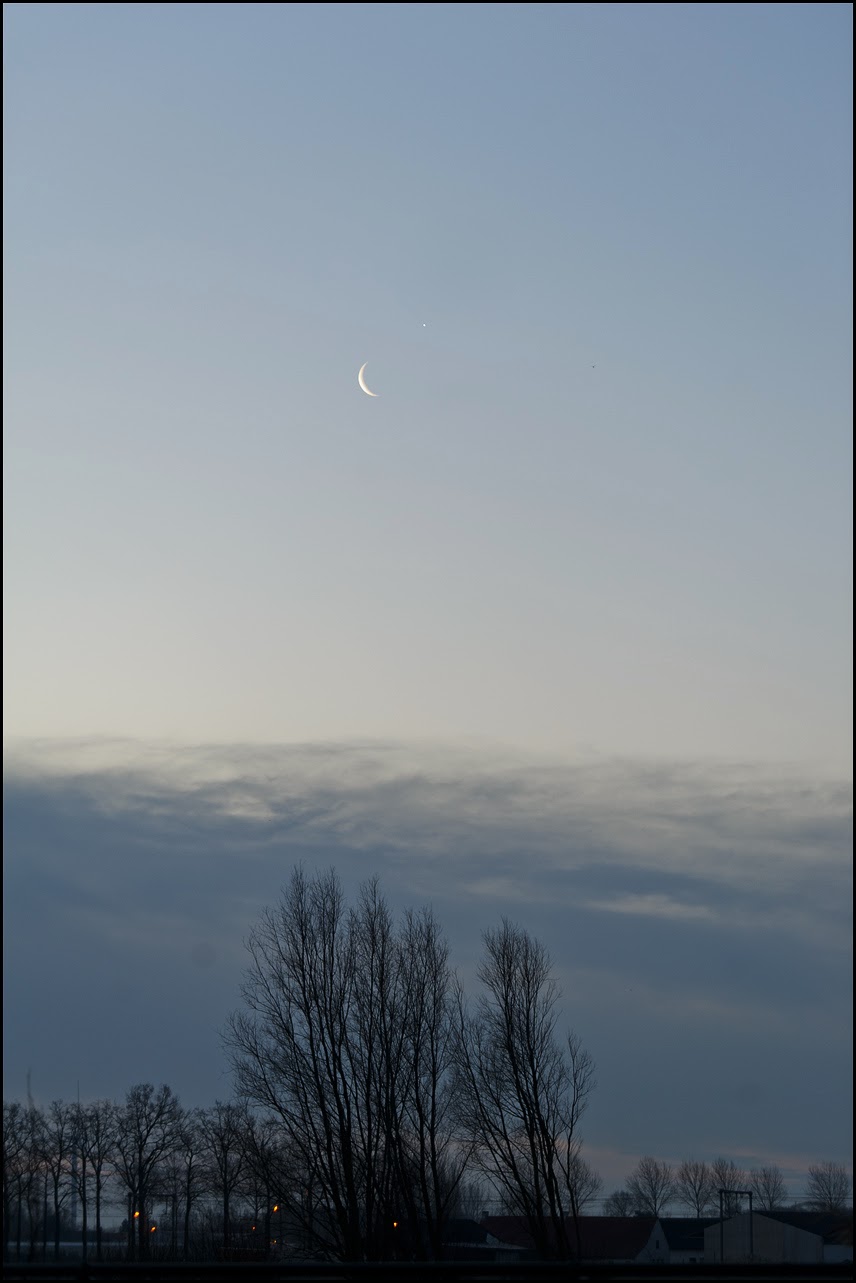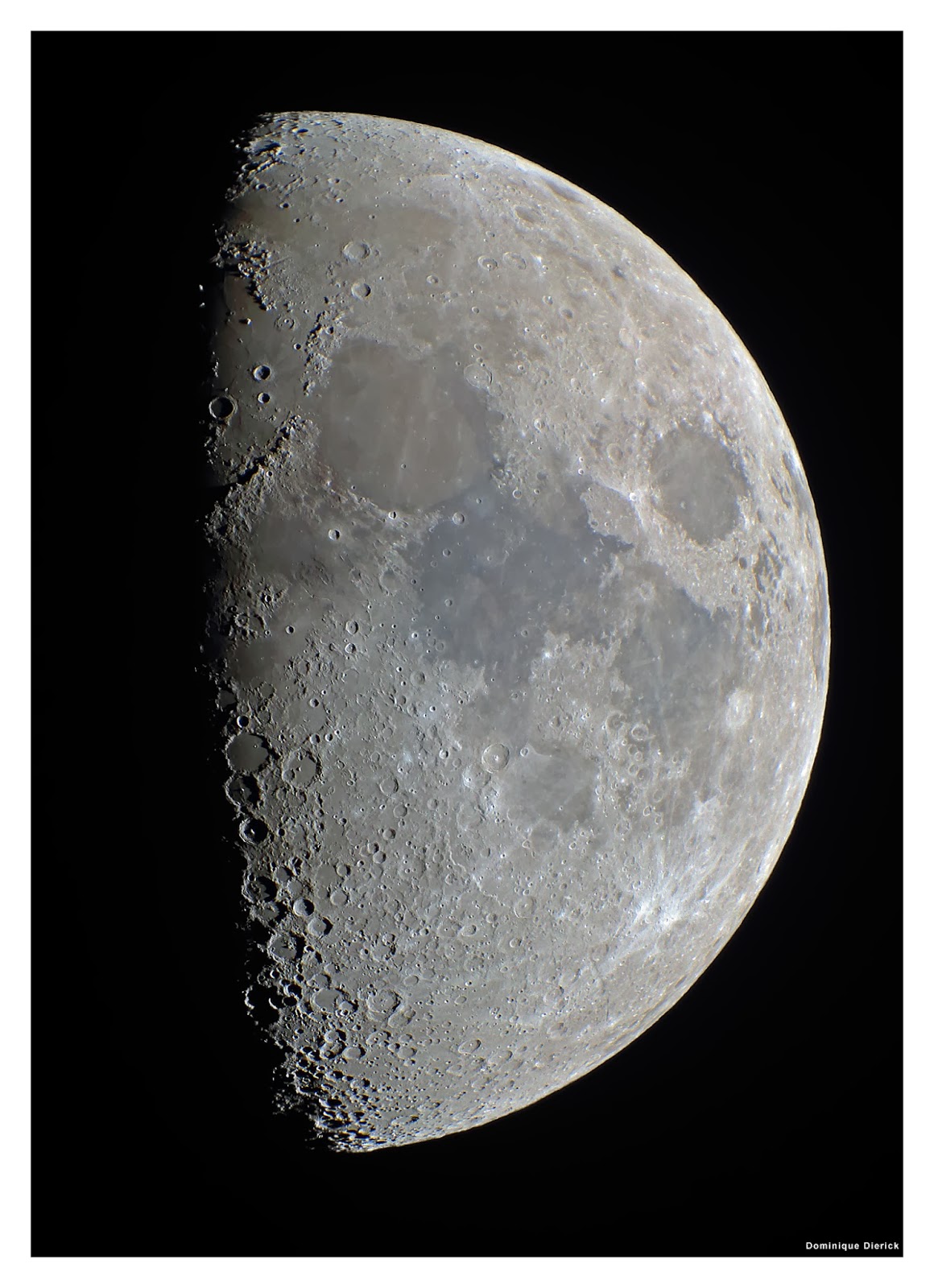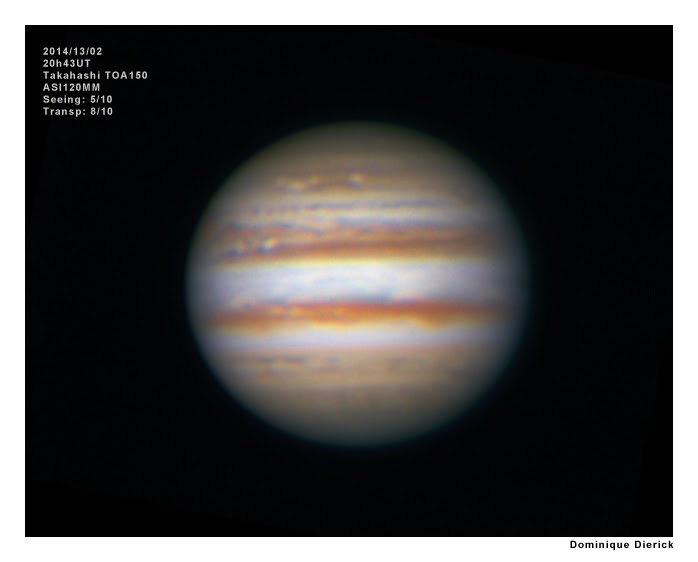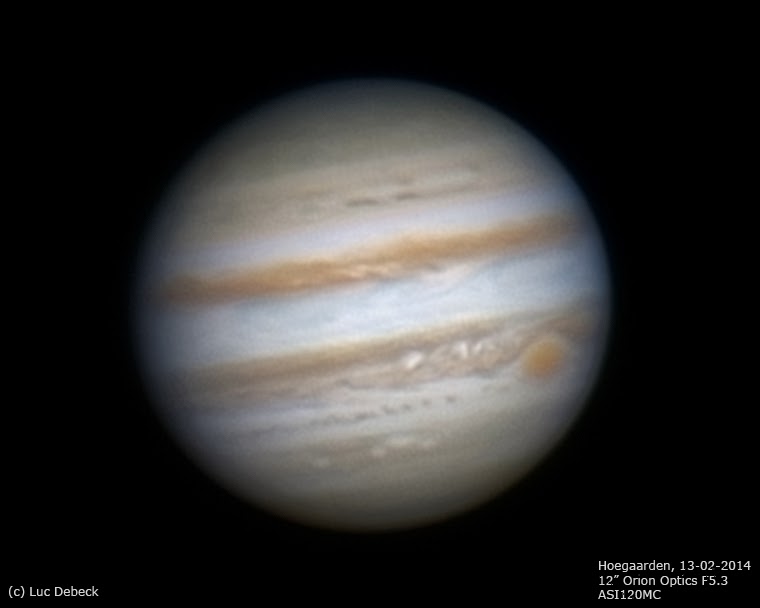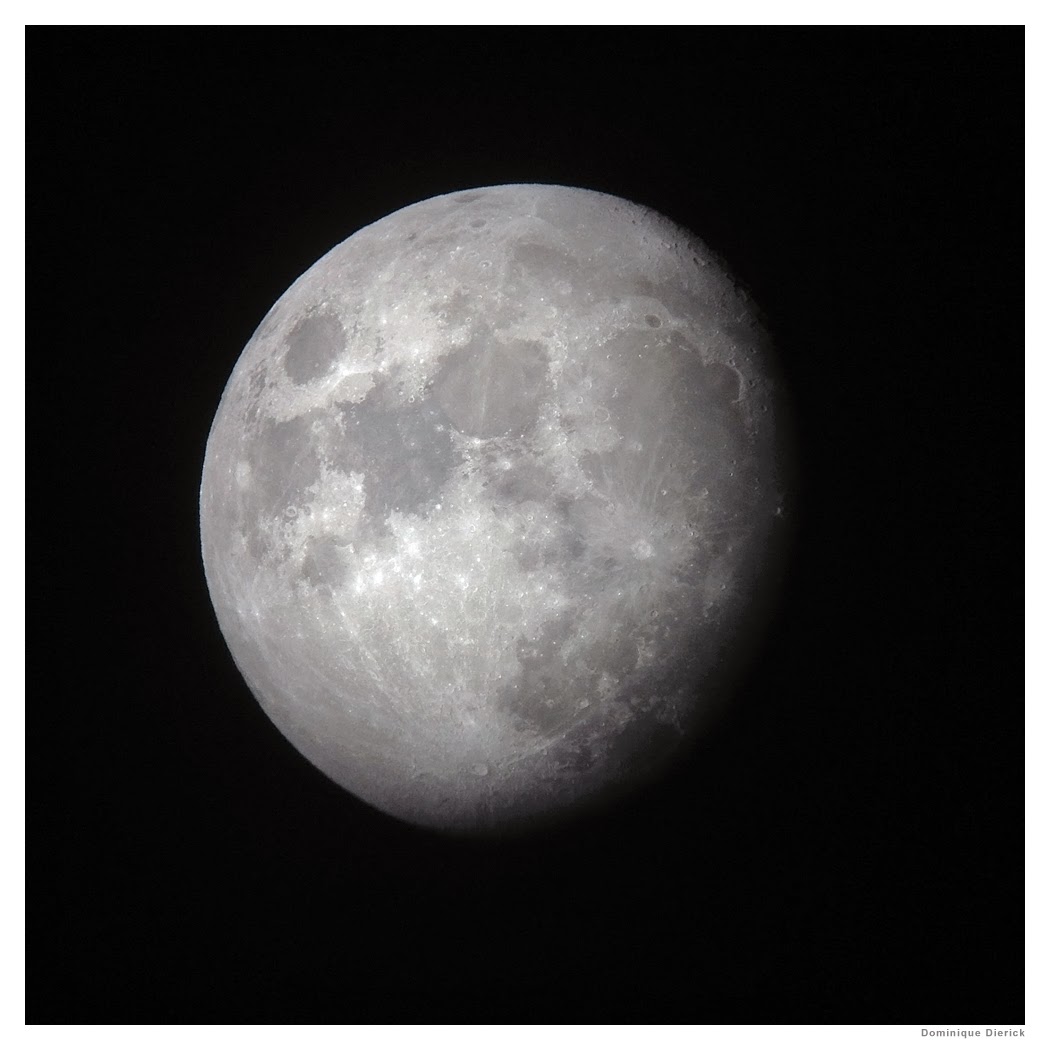The Stone Age of Astrophotography
Back in the 1970's and 1980's, astrophotographers were making extreme long exposures of the night sky on Kodak monochrome, spectroscopic emulsions, the 103aO/E/F series. A rather difficult emulsion, of which you had to wipe off the anti-halo layer, in the dark, with a piece of cotton, soaked in fixer. Sometimes disaster struck - and we have all seen it happen - when the photographer wiped away the emulsion instead, destroying hours of work. Later on we moved to Kodak TP2415 baked overnight, at 60 degrees, in a pressurized tank filled with forming gas. 'Hypering' prolonged the sensitivity of Kodak's fine grained emulsion. We could record many deep sky objects, especially through deep red filters. It was considered state of the art in those days. Glued to the cross hair eyepiece of a parallel mounted guidescope, we had to make sure never to let a tiny guide star slip away from dead center in the field, correcting our not-so-perfect equatorial mounts for hours in a row, in the freezing cold. One silly airplane could ruin hours of effort. There were lots of silly airplanes around.
 |
| 90 minutes exposure through a Takahashi astrograph on hypered TP2415, back in the 90's. |
Twenty years ago, digital CCD's made it into amateurs hands, leading in less than a decade to even more beautiful images of the night sky, driven by evolution of hardware and software. Guiding was no longer done manually. A guide camera or even a guide CCD mounted inside the camera got rid of that nuisance. Finally we could make shorter subframes, and handily relying on the linearity of a CCD (film just gets slower and slower the longer you expose, unlike a CCD), and added them together to create magnificent, technicolor images of the deep sky. If one frame was ruined by an airplane trail, we just dropped it from the stack. Color was obtained by imaging through red, green and blue filters and putting it all together in software. Fantastic technology, but not exactly cheap.
 |
| 2 hour exposure using an SBIG CCD and RGB filters with Takahashi FSQ in 2006 |
New kid in town
Ten years ago, the digital SLR became widespread, and budget astrophotographers started to experiment with them to capture deep space photons. In the early days, the cameras captured more noise than there are sand grains in the Sahara, and the colors were often way off. Courtesy of a far red to IR blocking filter in front of the CCD or CMOS. The filter renders human subjects a nice natural skin tone instead of an ugly, deep red one. Unfortunately, as a side effect, it blocks an important wavelength for astronomy: the hydrogen alpha line, which gives many nebula their saturated, deep red color.
Clever astronomers dismantled secondhand DSLR camera's and removed the darn filter. It proved some serious progress. Finally the colors were more or less 'right'. But the noise issue remained, well, an issue. Real CCD camera's are cooled, to reduce the amount of noise building up in the image. DSLR's are not so cool, and they get less cool with every successive frame taken. People installed peltier cooling elements, used icepacks, whatever kept that chip as cold as possible.
 |
| Keeping the camera cold with icepacks! |
Fortunately, DSLRs are behaving much more astro friendly nowadays. Most vendors drive up the sensitivity and noise reduction capabilities to insane heights. You want 250.000 ISO? See what we have got for you! Now, 250.000 ISO may sound nice, but those extreme speeds are not really suitable. Far too noisy for the necessary extreme level stretching of astronomical pictures, and virtually no dynamic range left in the resulting image. But, they got really, really, really good in their lower ISO's, say up to ISO 1600 or even 3200. My Canon 6D produces an absolute minimum of noise grain, even now, in the moderately warm summer months.
Short is beautiful
The last few years have not only seen progress in DSLR technology. Telescopes, guiding mechanisms and software joined in to create a relatively cheap platform for some serious deep space photography. Fast Newtonians with correction lenses, apochromatic refractors, flatfield Schmidt-Cassegrain and Ritchey-Chrétien telescopes have seen their prices drop substantially by far east mass production, making them available to many amateurs.
All of this evolution seems to come together right now to allow for nearly Polaroïd like astrophotography. And instant and quality deep sky satisfaction is what we really want. Yihaa! We no longer want to use a cabling mess, take computer systems out in the cold and moisture, add guide cameras and the needed guide system calibration, nor image through R, G, B filters. All this takes up lots of time. Time that I, and maybe you too, really want to use to grab more subjects. At least where I live, clear nights are scarce.
The InstaSky Image
This spring, I wondered what would be possible with my telescopes and a (blocking filter stripped) Canon 6D. I still had a modern, cooled SBIG CCD with a large filter wheel, but honestly, I just did not find the time, and worse, the motivation to use it. In the observatory I have a Takahashi FSQ106 ED refractor, with the dedicated reducer bringing it down to a fast f 3.75. On top sits a Celestron C8 Edge HD, also with a reducer for a resulting f 7 system. They are both mounted on a Chinese mount, the Skywatcher EQ8. Some serious mount, with excellent tracking and precision for a budget price. No way you could find something similar, just two years ago.
In July, I got everything ready to start with what I since call InstaSky's (as in Instagram): short exposures showing the deep space in nice color, to a larger audience, with acceptable to even good quality. Good enough to wow non-astronomers and get them interested in the night sky. To make the images, I just let the EQ8 track at sidereal speed, without any additional corrections nor guiding. The Canon 6D runs on its internal battery. No computer is used anymore. Since severe light pollution from nearby Ghent limits the exposure time for one single frame, I decided to standardize on a short, 60 second exposure, at ISO 800 (on the Takahashi) to ISO 2500 (on the Celestron). To block at least part of the pollution, I use an IDAS LPR filter. It prevents the sky from turning completely red in even a minute.
First Light, NGC 7000
Late July saw first light. The GOTO system of the EQ8 was targeted at NGC 7000, the North America Nebula in Cygnus. I focused on bright Deneb nearby, using the live view functionality of the Canon 6D - easy (and more forgiving than a CCD)! The external Canon interval timer was put to 60 seconds. I did not bother to take any darkframes (to reduce the noise) nor flat frames (to correct light fall off and dust specs in the optical system). The raw image was dropped into Adobe Photoshop CC and about a few seconds later I got this very first image with the Canon 6D after its modification.
It wowed me. I mean, seriously, this was done in just 6 0 seconds from a very mediocre site, with virtually no post-processing, just stretching the levels. I could have done a far better job in Photoshop, but that is not what I wanted to show here.
Of course, a more traditional approach of stacking different subframes together *will* produce a more pleasing result, but still: show this image to any bystander not into astronomy, within 2 minutes, taken at the telescope...
Since the sky remained clear, I programmed the Canon remote to make 60 images of 60 seconds, stacked them in Nebulosity 3.2 with darkframes, flatfields and bias frames. I did want to see the result of one hour of imaging from my site. This one was completely post processed, color corrected and contrast boosted in PS CC. The details in the large format of this image are really 'CCD' like and much more pronounced than in the single frame version. As expected. The stack of 60 frames, with calibration frames, offers much more headroom for post processing due to the higher signal to noise ratio.
Day Two: Sadr Region Cygnus
A couple of days later, conditions were fine again and I aimed the Takahashi at Sadr, a bright star in Cygnus. It is embedded in lots of hydrogen alpha nebulosity. Here is the InstaSky of that milky way region, in just 60 seconds.
Collecting 60 x 60 seconds, with additional post processing as with NGC 7000, rendered the image below.
Day 3: M52 and the Bubble Nebula
While perfecting the polar alignment of my EQ8 mount, I made another InstaSky. This time with the moon in the sky. I didn't bother to make a series of subframes of this object. Conditions were all but great, and still, here's the result of 60 seconds. The Takahashi operated at its native focal length, without the reducer, at f 5.
Day 4: Planetary Nebula M27
Bottom line, InstaSky's were perfectly possible with my Takahashi refractor, which is a fast system with a relatively short focal length. How would it be with a larger system? In between the clouds, on an August night, the sky was very transparant. I knew a long series would not be possible, so InstaSky was again the way to go. This time I went for the Celestron C8 Edge HD, a Schmidt Cassegrain system, working at f 7 for 1400mm of focal length, and much more demanding. Nearly three times the focal length of the Takahashi, at least one or two stops slower. I reckoned, let's just crank the ISO up to 2500 and see what comes out of it...
The minute I saw the picture displayed on the Canon screen, I knew it would be a fine image. Again! The OIII and H-Alpha colors were sparkling, as were the star colors. It required very little post processing in Photoshop. I just did a contrast stretch, a slight noise reduction and enhanced the star colors. The image below is a downsized crop of the central part of the 6D. Unlike its larger brothers the C8 Edge HD is not fully corrected for the 35mm size chip of the 6D. It tops at the APS size format. But look at these colors and detail, and remember: still 60 seconds, still unguided, with a very modest telescope.
Conclusion: InstaSky Works
I had never hoped the above results to be possible. I am taking these images just 14km from the center of a large city, a city which blows *a lot* of artificial light into the night sky. The combination of fast equipment and the excellent Canon 6D really allows for nearly instant deep sky photography, something unimaginable just a couple of years ago. It makes it possible to show beautiful and colorful images of the deep space at public star parties in a couple of minutes. One could use one telescope to show the 'faint fuzzy' ("I can't see it") and the imaging scope to show how it would look if we had extremely sensitive eyes.
For the record: you can do all this with another brand of DSLR too. Just, Canon has the edge of historically being the camera of choice for this kind of photography, for a number of reasons (technical, software availability). As a result, it may be harder to find someone who can modify a Nikon for you (if you can't do it yourself). But even unmodified, you can still do nice things with either Canon or Nikon (or Sony, or Pentax).
Can the above images be better? Of course they can. Move to a darker sky (especially), make longer subexposures and they will be dramatically more impressive. Use a cooled, expensive CCD camera, and again they will be better. But likely at a much higher cost, with a lot more time, and without the fun of sharing the experience instantly with your neighbors and friends.










